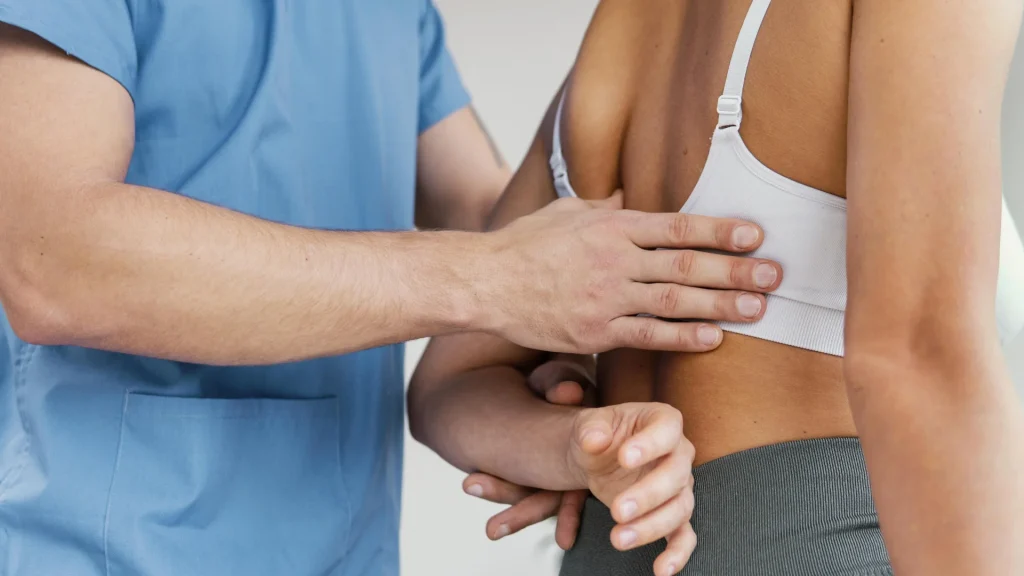Noticing the Early Signs of Scoliosis: When to See Your GP
Scoliosis is a condition that affects the spine, causing it to curve abnormally to the side. While it can develop at any age, it most commonly appears in children and adolescents during growth spurts. Early detection of scoliosis is crucial to managing its progression and preventing potential complications. Understanding the early signs and knowing when to seek medical advice can make a significant difference in treatment outcomes.
What is Scoliosis?
Scoliosis is defined as an abnormal lateral curvature of the spine, typically forming an “S” or “C” shape. It can range from mild to severe and may cause discomfort, posture changes, and in some cases, breathing difficulties if left untreated. The most common type is adolescent idiopathic scoliosis (AIS), which occurs in children aged 10-18 and has no known cause. Other types include congenital scoliosis (present at birth), neuromuscular scoliosis (associated with conditions like cerebral palsy or muscular dystrophy), and degenerative scoliosis (affecting older adults due to spinal wear and tear).
Early Signs of Scoliosis
Since scoliosis can develop gradually and without pain, it is often unnoticed until it becomes more pronounced. Here are some early warning signs to look out for:
- Uneven Shoulders – One shoulder may appear higher than the other, or one shoulder blade may stick out more prominently.
- Asymmetrical Waist or Hips – The waist may look uneven, or one hip may sit higher than the other.
- Leaning to One Side – A person may unconsciously lean to one side when standing, indicating an imbalance in spinal alignment.
- Rib Cage Protrusion – A noticeable protrusion of the ribs, particularly when bending forward, can signal a spinal curve.
- Clothing Fit Issues – If shirts or dresses seem to hang unevenly or trousers appear longer on one side, it may be due to scoliosis-related posture changes.
- Back Pain or Stiffness – While mild scoliosis is often painless, some individuals may experience discomfort or muscle stiffness.
- Changes in Walking Pattern – Scoliosis can affect gait, making a person walk with an unusual tilt or imbalance.
When to See Your GP
If you or a loved one notice any of these signs, it’s essential to consult a GP. Early assessment can lead to timely intervention and better treatment outcomes. You should see a doctor if:
- You notice visible asymmetry in the shoulders, waist, or hips.
- The spinal curve appears to be worsening over time.
- There is persistent back pain without a clear cause.
- The person has difficulty standing straight or experiences balance issues.

How is Scoliosis Diagnosed?
A GP will typically perform a physical examination, checking spinal alignment and posture. The Adam’s Forward Bend Test is commonly used, where the patient bends forward while the doctor looks for spinal curvature or rib protrusion. If scoliosis is suspected, imaging tests such as X-rays, MRI, or CT scans may be recommended to determine the degree of curvature.
Treatment Options
Treatment for scoliosis depends on the severity of the curve and the patient’s age. Common approaches include:
- Observation – For mild scoliosis, regular monitoring ensures that the curve does not worsen over time.
- Bracing – In children and adolescents with moderate scoliosis, wearing a brace can help prevent further curvature as they grow.
- Physical Therapy – Strengthening exercises can improve posture, muscle balance, and flexibility.
- Surgery – Severe cases may require spinal fusion surgery to correct the curve and prevent progression.
The Importance of Early Detection
Detecting the signs of scoliosis early provides the best chance of managing the condition effectively. Mild cases often require minimal intervention, while more significant curves can be treated before they lead to complications. Encouraging children and teenagers to undergo routine spinal checks—especially during growth spurts—can help identify scoliosis early.
Final Thoughts
Scoliosis is a manageable condition, but early recognition is key to ensuring the best possible outcome. If you or someone you know exhibits signs of scoliosis, don’t hesitate to seek medical advice. At Melbourne Spine Studio, we advocate for early detection and proactive treatment to support spinal health and overall well-being.
If you’re concerned about scoliosis, book an appointment with your GP today. Early intervention can make all the difference!